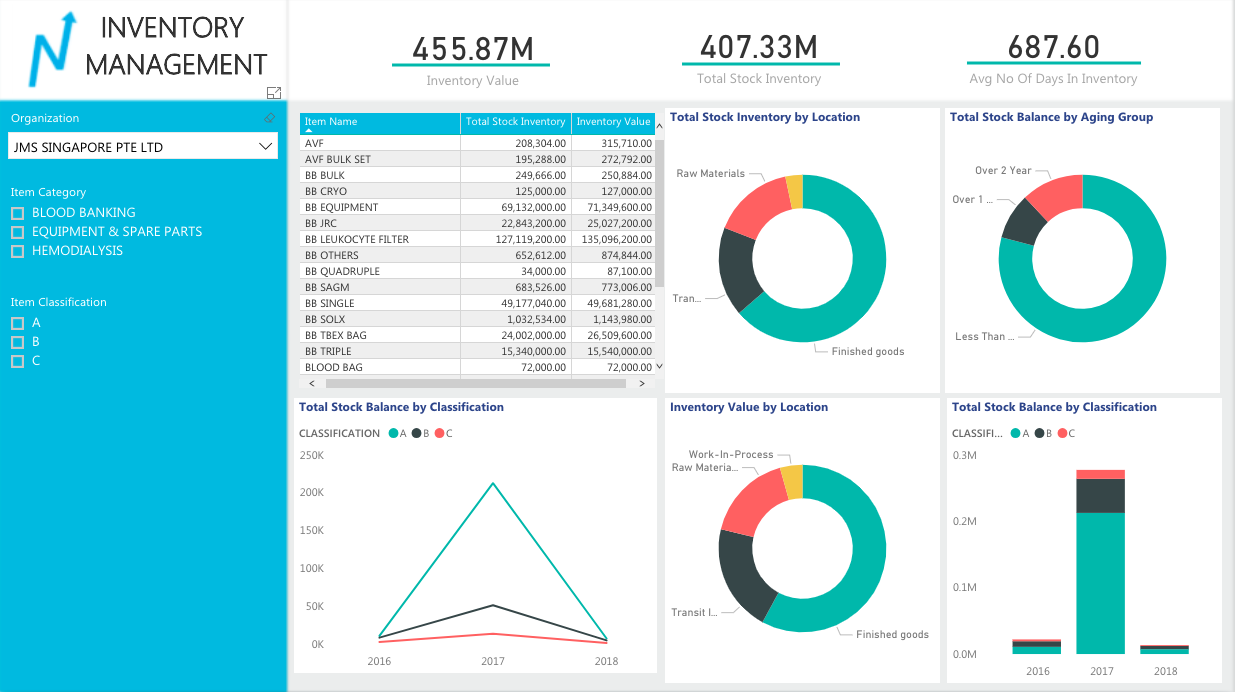
Just Analytics (JA) engages with experts of various industries to share best practices with our customers. In this article, Joey Estrera, Vice President for Research and Business Development of the Foundation of the Society of Fellows in Supply Chain Management, talks about inventory management and why categorizing inventory is a best practice for all organizations.
Want more info? Make sure you contact us for all these trending topics.
1. What best practices should organizations have in place to effectively manage inventory?
Effective management of inventory means paying more attention and exerting more control over items that are considered “high value.” “Value” is determined in terms of estimated usage (usually on an annual basis) multiplied by the unit cost of the item.
2. Is it important to categorize inventory?
Yes, because inventories should not be managed equally. More focus and attention should be given to those that have a high impact on the organization in terms of usage-value. Less time and effort are allocated to items that have low impact or effect on the organization.
3. What is a good technique or tool to use for categorizing inventory?
One good way to categorize inventory is through ABC Analysis or ABC Inventory Classification. ABC Analysis makes use of the Pareto principle (also known as the 80–20 rule, the law of the vital few, and the principle of factor sparsity) and applies it to inventory management.
It is a system that categorizes inventories into groups/classes (A, B or C) for better management and proper control of inventories. It aims to establish the best possible control at the lowest possible cost for each class of item in inventory. ABC Analysis classifies inventories in to three groups: A, B and C. A items are about 10% of the item count but in terms of usage-value may amount to 70%. C items are the opposite: they account for about 70% of the item count but only 10% of usage-value. B items are those that account for 20% of the item count and 20% of usage-value. Each class would be managed differently.
A items are usually controlled tightly and inventory levels are kept to a minimum because of their value. C items on the other hand are given less attention (less administrative cost in managing).
4. What factors determine which materials or inventory land in the different categories or ABC classes?
The annual usage-value of each item is estimated from forecasted requirements, multiplied by unit cost. The total usage-value of all inventory items are taken and then used as the basis for computing the percentage to total of each item. All the items are then ranked from highest to lowest based on usage-value. This becomes the basis for determining the A, B and C items.
5. What impact does the use of ABC Analysis have on supply chain operations?
When properly applied, ABC Analysis helps manage inventories thus contributing to the basic goals of Supply Chain Management: high customer service at lowest possible cost, thus contributing to profitability of the organization. It balances the cost of carrying inventories with customer service.
ABC analysis can be extremely helpful in stocking and reordering goods in the inventory. The classification of materials based on its value gives a better understanding of the critical items in our stock. The solution discussed here has been developed for one of our customers for whom ABC analysis proved to be highly profitable. Our solution not only provided them with a better inventory management system but also helped in forecasting the profits the company made from individual items.
ABC analysis is a significant tool to empower organizations with the biggest cost management benefits: to lessen acquisition costs or to increase cash flows. This outcomes in operational adequacy prompting better administration of assets. Want to take a guided inventory demo? Click here
About the Subject Matter Expert
Joey Estrera is a Supply Chain Management expert with more than 40 years of experience in operations, procurement and logistics in various industries including Manufacturing and Retail. Currently, Joey is founding chairman and chief financial officer of BizSolv Asia and the Vice President for Research and Business Development of the Foundation of the Society of Fellows in Supply Chain Management. He is also a professor at De La Salle University in the Philippines.



